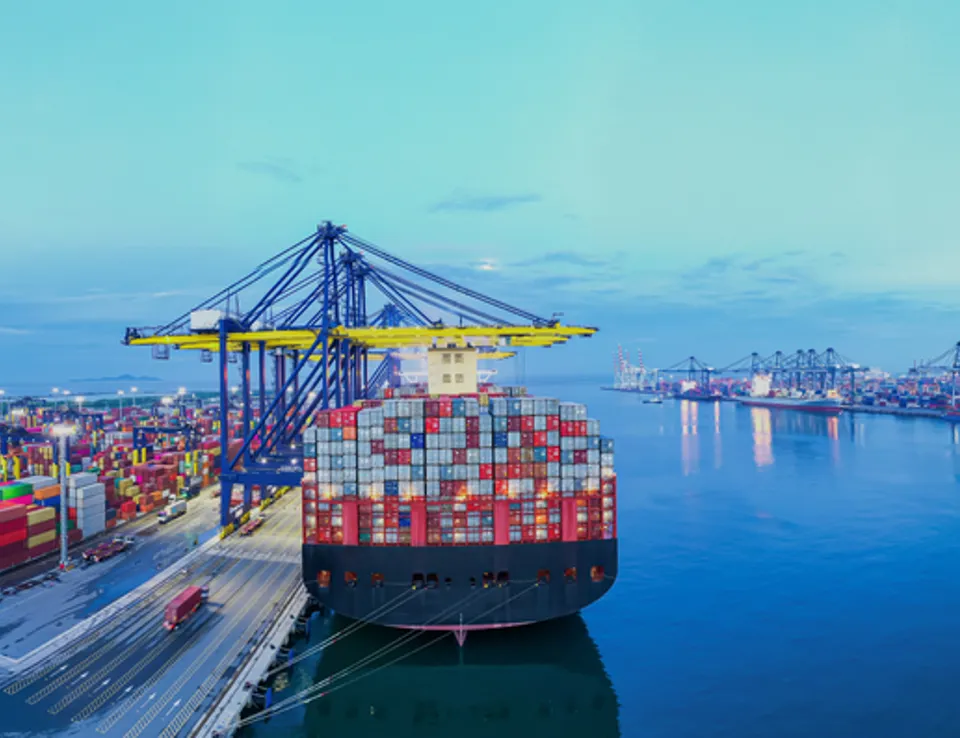
Overcoming the technical barriers to electrification of smaller maritime vessels
14 Apr 2025
With new emissions regulations on the horizon that specifically target smaller vessels, electrification is becoming an attractive alternative for diesel powered work boats, leisure craft and rescue boats under 400 gross tonnage (GT). Not only can the switch to hybrid and electric powertrains reduce greenhouse gas emissions, but also improve the acceleration, manoeuvrability and on-board comfort of these smaller vessels, whilst being easier and cheaper to maintain.
‘Hybrids have the added benefit of switching between engine and electric propulsion depending on the environment,’ highlights Peter Trueman, Market Head Off-Highway and Marine at Ricardo. ‘The operator can run in electric mode when travelling through marinas or waterways to minimise air and noise pollution. While out at sea, use the engine to provide additional power.’
‘The other advantage of a hybrid is you don’t necessarily have to plug in to recharge the batteries because the engine can sustain the battery's state of charge during engine-only operation,’ adds Trueman.
What is the optimum hybrid powertrain layout of smaller vessels?
The components required for a hybrid powertrain include a high voltage battery pack, power distribution, power electronics, motors, clutch, transmission and the engine. There are various configurations depending on how the power from the electric motor and engine are combined. But for smaller vessels, the preferred option is to be able to connect and decouple the electric and engine mode as required.
‘By using a clutch to engage the electric engine to the transmission, the boat can run in electric mode until it reaches open water,’ explains Temoc Rodriguez, Global Technical Expert Electrified Solutions at Ricardo. ‘You can then decouple the electric power and use another clutch to engage the engine to achieve higher power levels when out at sea. Unlike automotive, there is minimal regeneration, so it doesn’t make sense to have the electric motors continuously coupled to the engine. But ultimately any of the P1 to P4 transmission configurations can be used, it just depends on the use case of each individual vessel.’
Hybrid engines can prevent wet stacking
‘One of the key advantages of a diesel-electric hybrid drivetrain is its ability to eliminate the challenges caused by long idle periods or low-load operation—conditions that can lead to issues like wet stacking in traditional diesel engines,’ adds Trueman. ‘The latest exhaust aftertreatment systems fitted in modern Stage IV and V engines can be damaged by this activity, resulting in costly repairs and downtime. By allowing vessels to operate in fully electric mode during low-demand periods—such as manoeuvring, idling, or low-speed cruising— this issue is completely removed. So, opting for a hybridised system cuts emissions and lowers total cost of ownership for owner.’
Article: What role will electrification play in marine?
Battery specification challenges
However, while hybrid systems offer big benefits, fitting all the components onto a small vessel—especially during a retrofit—can be challenging. The first challenge is sizing the battery, which depends on the energy requirements of the vessel. This can be estimated by modelling the journeys of the boat, considering different routes and weather conditions to identify a worst-case energy capacity.
‘Once the energy requirement has been defined, you can then calculate the number of cells you need,’ highlights Rodriguez. ‘For marine applications energy density is more of a priority than power density, so you’ll easily meet the power requirement with the cells you need to meet the energy requirement.’
‘This is because boats need low levels of continuous power and so discharge at low rates such as 1C,’ continues Rodriguez. ‘Whereas, in automotive, cars accelerate and brake more frequently, so power density is important which is why the batteries typically discharge more quickly at 5C or 10C.’
Unfortunately, current battery technology means that it requires many cells to meet this energy requirement, resulting in large battery packs which are difficult to fit onboard small vessels. This is particularly challenging when retrofitting.
Furthermore, the battery packs need to be positioned to avoid disrupting the balance and centre of gravity of the boat, restricting locations even more. Consequently, there may not be enough space onboard to fit the necessary batteries, limiting the overall range of the boat.
‘There is a potential solution for this,’ comments Rodriguez. ‘Upcoming solid-state batteries can double the amount of energy within a given volume and mass. This would mean fewer cells are required for the same energy demands, cutting the size of the battery pack in half. This could be a real catalyst for a wider adoption of electrification in the marine industry.’

Safety challenges
Hybrid powertrains operate at much higher voltages, around 400V to 800V, than the conventional 12/24V electric circuits found on ICE powered boats. Consequently, an array of safety measures must be put in place such as extra insulation around wires, correct labelling of high voltage components and cables, as well as installing monitoring systems that quickly identify faults and respond accordingly. Operators also need to be informed about the hazards onboard and how to interact safely with these high voltage components.
There is also the threat of battery failure, which could lead to catastrophic consequences. Luckily, the low discharge rates of marine batteries mean that cells are less stressed, reducing the likelihood of failure. However, if a failure does occur, this needs to be managed safely, particularly in the scenario of a boat which could be stranded at sea for hours.
‘The space restrictions onboard smaller vessels mean the battery packs are typically split up in different compartments across the ship,’ comments Rodriguez. ‘Although this increases cabling, it comes with a safety benefit as segregating the cells avoids failures propagating throughout the rest of the pack, mitigating the risk of thermal runaway. Containing these failures in specific compartments of the boat also allows toxic fumes to be effectively vented to the external environment rather than onboard.’
Transmission Design challenges
A hybrid powertrain demands a mechanical transmission that can combine two very different power sources: the engine and electric motors. ‘Engines deliver a spread of torque over a range of revolutions, with a very narrow band of efficiency, whereas motors deliver constant torque instantly and tend to operate efficiently at higher speeds,’ explains Trueman.

‘That makes the job of designing transmissions for marine applications particularly challenging because it’s even more important to extract the maximum efficiency out of the limited range of the battery. That’s where our Element epicyclic range of transmissions can help because they can achieve over 90% efficiency.’
Learn more about the Element modular transmission range
Supply chain challenges
With hybridisation only just gaining momentum in the marine industry, the supply chain is not yet established, making it difficult for boat builders to reliably source quality hybrid components. Furthermore, shipyards that have been installing steam or diesel power plants for decades now need to adapt to working with hybrid propulsion systems to ensure they are implemented correctly and safely.
‘This is another area where Ricardo can help,’ says Trueman. ‘We have full end to end capability from advising on the latest emission regulations right through to manufacturing high precision transmission components.’
‘We also have expertise in the wider product development as well,’ concludes Trueman. ‘We can work with propulsion manufacturers and installers to define specifications and ensure the hybrid system successfully progresses from concept to delivery with the final installation meeting the goals of the customer.’
Although there are a number of hybrid vessels now in operation, it will likely be some time before we see a widespread transition to hybrid power. However, the recent release of the Department for Transport’s Marine Decarbonisation Strategy has highlighted that policy targeted at decarbonising smaller vessels is on the horizon and businesses with products in this subsector need to take this into consideration now to avoid being caught out when legislation comes into effect.
Article: What does the Maritime Decabonisation Strategy mean for my business?
Electrification and hybridisation are viable options for the decarbonisation of smaller maritime vessels, particularly those with short predictable duty cycles, regular recharging or refuelling opportunities and sufficient onboard storage for batteries.
If your business is considering the switch to electrification then Ricardo’s experts can support you at any stage of your decarbonisation journey – from policy all the way through to series production.
Subscribe or ask us a question
Subscribe for updates or get in touch with our experts about your maritime decarbonisation challenges











